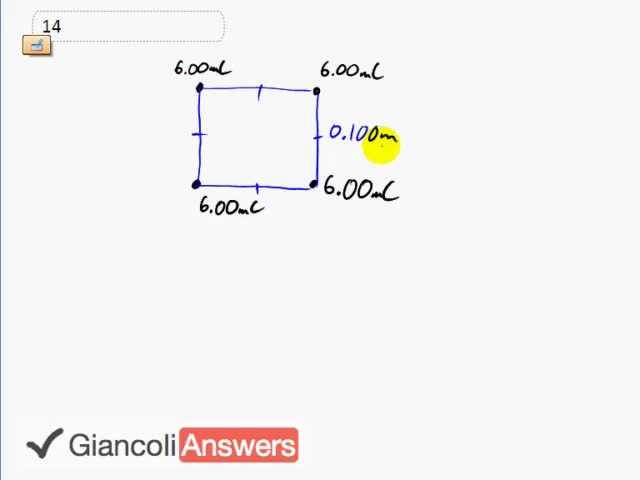
diagonally away from the center

In order to watch this solution you need to have a subscription.
Mr. Dychko,
Hello. It has been sometime since I've had algebra and while I understand the reason for algebraically simplifying the problem to the find the solution rather than resorting to vectors, I can't recall the rules for certain aspects of your work; particularly, how to simplify roots. Could you elaborate on how √2Aab^2 simplify to √2 x Aab?
Hi jrichardson83, welcome back to algebra ;) Thanks for your question. If I understand your question correctly, you're referring to 4:14 in the video where is simplified to , correct? If so, keep in mind that the subscripts "1" and "2" are just cosmetic labels, and not variables in of themselves. They serve to label the force as the force on charge "1" due to charge "2". This means the algebra is the same as . It is permissible to take the square root of each factor under the square root, and then multiply the results. Since isn't pretty, never mind that result, and take just the square root of and multiply that by the square root of 2. Hopefully that helps. If you want to challenge your math vocabulary comprehension, a textbook might say that when taking the square root of a product, you can instead take the product of the square root of each factor.
All the best,
Mr. Dychko
Mr. Dychko,
I think I see. So am I correct in stating that the square root of a number squared is equal to the absolute value of that number? Also, at 6:11 you begin factoring "out the common stuff, which is almost everything, which for the most part I understand. However, my problem seems to involve what is supposed to go where. By that I mean why does root 2 end up in parentheses with 1/2? And is one half just the simplification of kqq/2r?
Hi Jamall, the subject you're going to want to refresh on is "factoring". A quick Google found https://www.mathsisfun.com/algebra/factoring.html and it seemed OK. I'll try to explain what happened in the video, putting important vocabulary words in bold, and this might make more sense after you review the basics of factoring. There are two terms here: . Terms are always separated by plus or minus signs. Each term consist of several factors. Factors are the parts within a term that multiply together, and I think it's nice to look at "multiply" in a more generic sense that includes dividing. By that I mean that dividing by "2", as in the second term in this question, is the same as multiplying by . You can always think of dividing by a number as multiplying by it's reciprocal... The process of "factoring" is to search for all factors that are the same among all the terms. The common ones gets put outside of some brackets, and the leftovers that are not common among the terms end up within the bracket. and are factors that are unique to the terms in which they appear, and so they are the leftovers that end up within a bracket.
All the best,
Mr. Dychko
Oh, and the absolute value of a number is it's positive value. What you said about taking the square root of the number squared is not technically correct, but in a practical sense it's good enough I suppose. The square root of a number technically has two answers: the positive and the negative, since squaring either gives the "radicand".